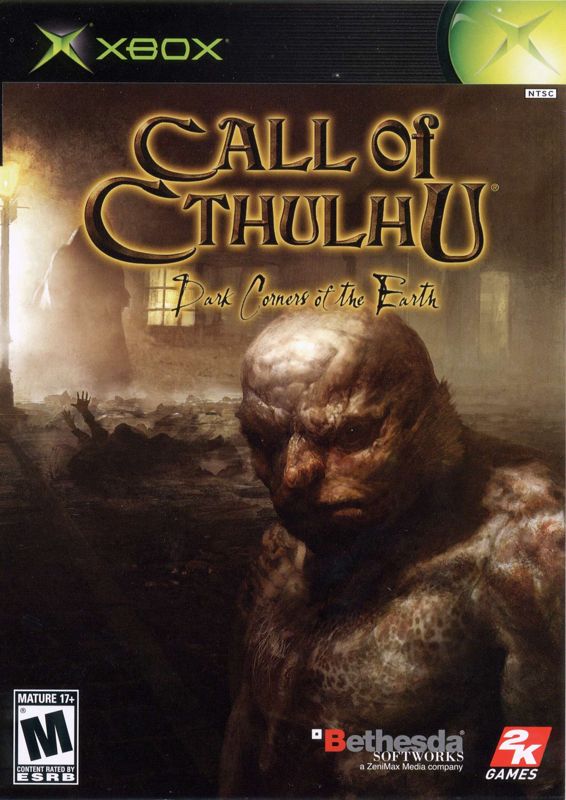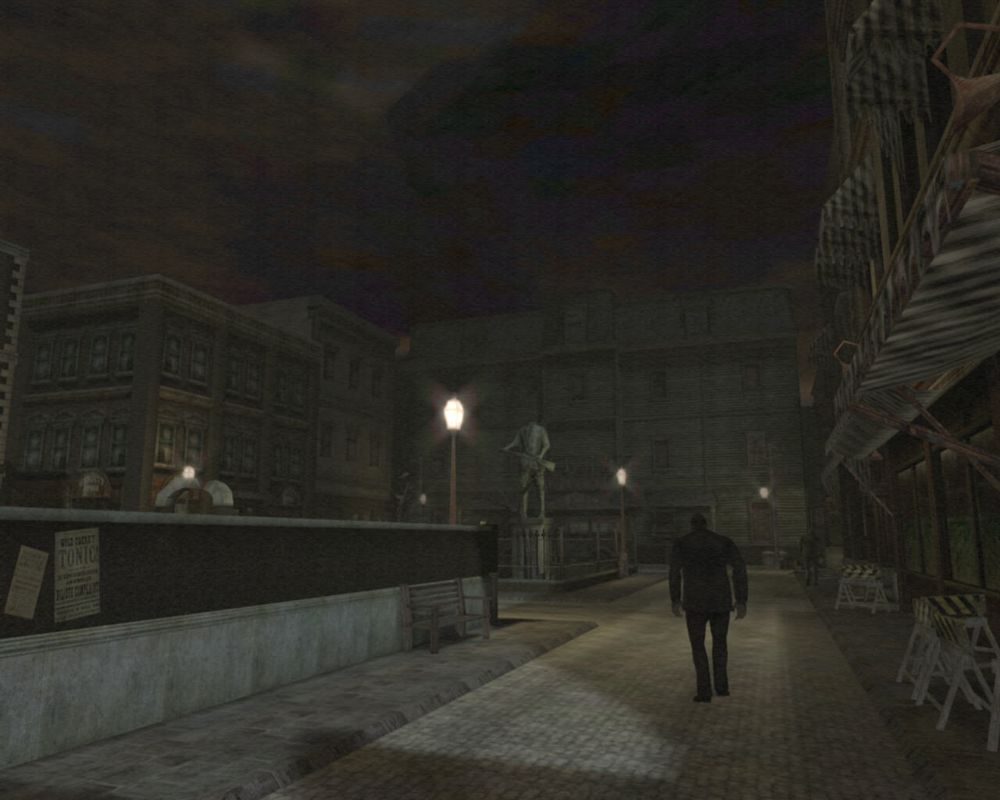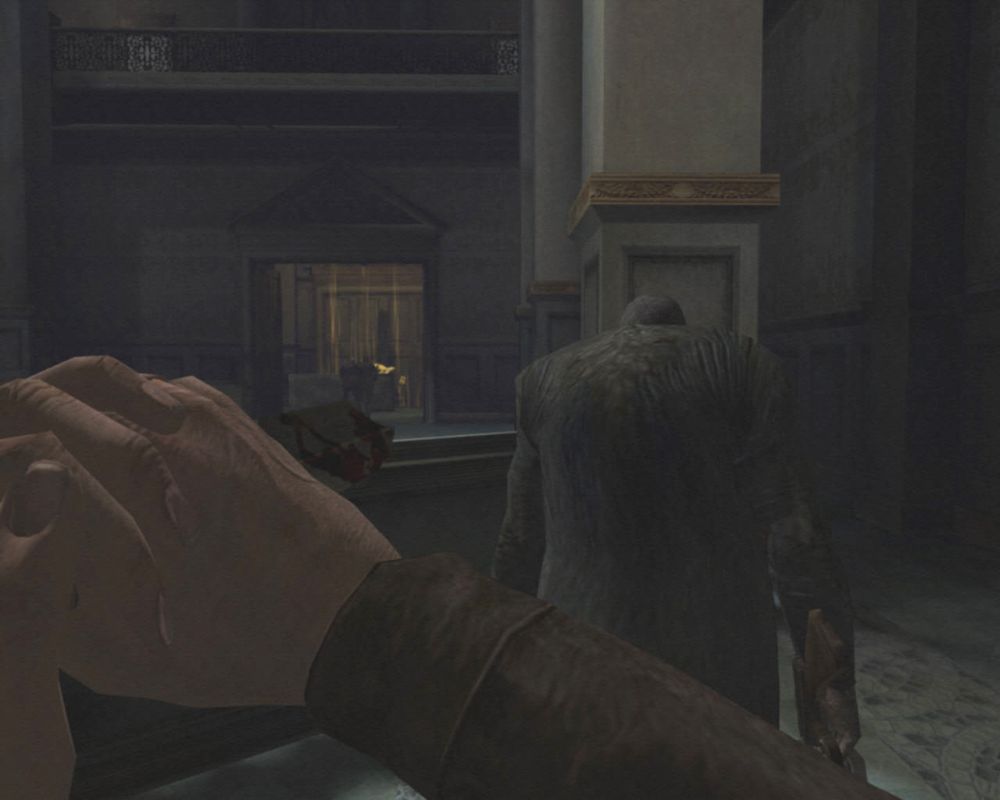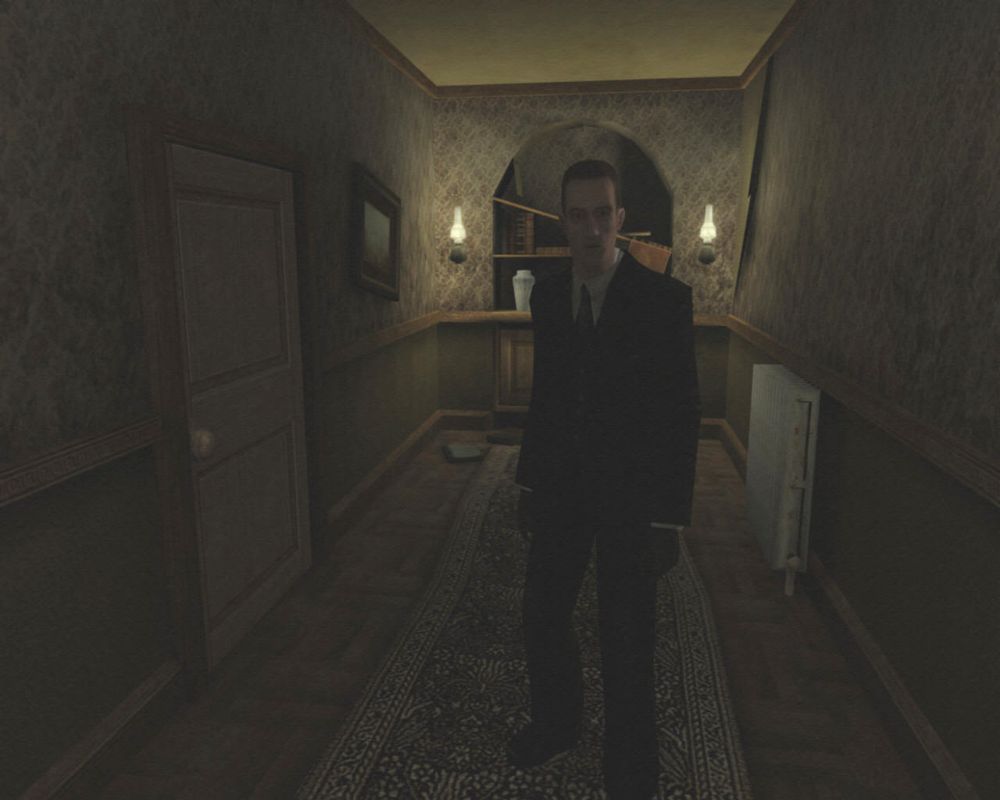Retro Replay Review
Gameplay
Call of Cthulhu: Dark Corners of the Earth begins with a measured pace, guiding Detective Jack Walters through an eerie coastal town in search of a missing person. Early sections lean heavily on exploration and investigation, allowing players to examine clues, question non-player characters, and piece together the mystery at their own pace. This deliberate opening not only grounds you in the narrative but also builds a palpable tension that simmers beneath the surface.
(HEY YOU!! We hope you enjoy! We try not to run ads. So basically, this is a very expensive hobby running this site. Please consider joining us for updates, forums, and more. Network w/ us to make some cash or friends while retro gaming, and you can win some free retro games for posting. Okay, carry on 👍)
As you press deeper into Innsmouth, the gameplay shifts organically from adventure to stealth and, eventually, to heart-pounding first-person shooting. The absence of an on-screen HUD or crosshair adds to the immersion: you learn to rely on Jack’s posture, the shakiness of his aim, and his ragged breathing as you gauge your health and standing. Keeping track of ammunition and weapon condition becomes a vital skill, heightening every encounter with fish-man cultists and otherworldly horrors.
The wound system is a standout feature that sets Dark Corners of the Earth apart from other survival horrors. Instead of abstract hit points, injuries are localized—broken limbs slow your movement, bleeding must be staunched with bandages or sutures, and spine-tingling hallucinogens like morphine mask your pain at the cost of sanity. This meticulous approach to health management makes every skirmish a choice: fight now and risk serious injury, or sneak past and conserve precious medical supplies.
Sanity plays an equally pivotal role in gameplay. Peer too closely at the unspeakable, and Jack’s vision warps, unsettling whispers fill his ears, and he teeters on the brink of madness. Moments of claustrophobic horror come alive as you navigate dark corridors with vertigo-inducing heights, forcing you to weigh the psychological strain of your actions. This tension between mind and body elevates every step, crafting an experience that stays with you long after you’ve put the controller down.
Graphics
For a game released in 2005, Dark Corners of the Earth delivers impressively moody visuals that capture the bleak atmosphere of Lovecraft’s Innsmouth. The palette is dominated by dingy grays, sickly greens, and the perpetual twilight of crumbling seaside buildings, all of which evoke a sense of decay and dread. Textures may feel dated compared to today’s standards, but their grainy authenticity only amplifies the unsettling tone.
Lighting is where the game truly shines. Flickering street lamps, ominous shadows cast by derelict warehouses, and the luminescence of phosphorescent fungi in hidden caves combine to create memorable set-pieces. You’ll often find yourself holding your breath as you creep past a flickering lamp, anticipating what might emerge from the darkness. These carefully crafted light and shadow effects make each environment a character in its own right.
Character models and animations lean toward the uncanny, with NPCs exhibiting jerky motions and hollow stares that feel deeply appropriate for a story steeped in madness. While faces may lack the polish of modern titles, the inexplicable twitching and subtle animation quirks heighten the unnerving atmosphere. Enemies, especially the deep ones, showcase warped, amphibious features that underscore their unnatural origins without leaning on gruesome gore.
Audio design complements the visuals perfectly. Every creaking floorboard and distant chant forms a tapestry of ambient dread. The absence of a persistent HUD extends into sound cues: footsteps grow louder when you’re bleeding, while whispered voices hint at impending insanity. Together, sight and sound weave an immersive horror experience that still stands the test of time.
Story
At its core, Call of Cthulhu: Dark Corners of the Earth is a journey into the abyss of human understanding. You play Jack Walters, a hard-boiled detective dispatched to Innsmouth to investigate a missing person case. What begins as a routine inquiry quickly unravels into a labyrinth of occult rituals, inbred cultists, and cosmic horrors that dwarf mortal comprehension.
The narrative unfolds with a deliberate pacing that mirrors Jack’s creeping paranoia. Voice acting is earnest and evocative, grounding you in his frustration and fear as he unearths suppressed memories of his own brief confinement in a mental asylum. This personal connection to madness transforms the tale from a simple monster hunt into a haunting exploration of trauma and obsession.
The game’s Lovecraftian roots are evident in every detail: from cryptic journal entries that reference elder gods to the looming silhouette of a monumental undersea city. Dialogues and environmental storytelling combine to fill in gaps, rewarding players who immerse themselves in every scrap of lore. Moments of revelation—such as discovering the true extent of Innsmouth’s corruption—are delivered with chilling subtlety, ensuring the pace never feels rushed.
Despite its occasionally uneven pacing, the storyline retains a strong forward drive. Key set-pieces, whether it’s navigating a demented fish-infested derelict or confronting the unimaginable beneath the waves, are expertly interwoven with investigative sequences. By the time the final revelations emerge, you’ll feel not only intellectually unmoored but emotionally invested in Jack’s fight against forces beyond human reckoning.
Overall Experience
Call of Cthulhu: Dark Corners of the Earth remains one of the most ambitious Lovecraft adaptations in gaming. Its blend of stealth, puzzle-solving, and visceral combat still feels fresh, thanks largely to the nerve-shredding tension created by resource scarcity and sanity mechanics. Every decision carries weight, ensuring players are constantly on edge.
While technical hiccups—such as occasional clipping or uneven frame rates—surface on modern systems, community patches and fan-made fixes have kept this title playable and relevant. The game rewards patience and careful play, making it especially appealing to fans of methodical horror rather than run-and-gun shooters. If you crave atmosphere over action, Dark Corners of the Earth is an immersive certificate of authenticity to Lovecraft’s vision.
Replay value stems from hidden logs, alternate stealth paths, and the satisfaction of mastering its unforgiving systems. The more you play, the more you discover about Innsmouth’s dark underbelly and Jack’s fragile psyche. This layered approach makes each return trip as unsettling as the first.
In an era of cinematic set-pieces and quick-time events, Call of Cthulhu: Dark Corners of the Earth stands out as a masterclass in slow-burn horror. Its meticulous design, unwavering dedication to Lovecraftian themes, and willingness to challenge players on multiple levels make it a must-experience for any serious horror aficionado or detective-even the faintest of heart may find themselves trembling in the shadows.
 Retro Replay Retro Replay gaming reviews, news, emulation, geek stuff and more!
Retro Replay Retro Replay gaming reviews, news, emulation, geek stuff and more!









Reviews
There are no reviews yet.